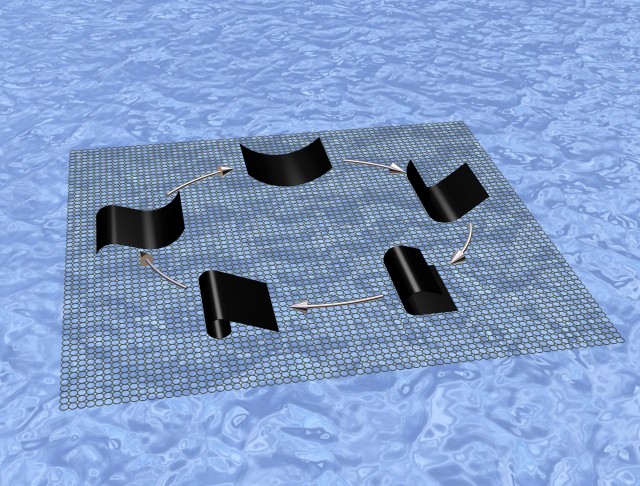Polymer film generates mechanical energy just by getting wet
Ars Technica » Scientific Method 2013-01-10

Polymers that change shape, size, or stiffness in response to light, heat, or liquids could be useful materials that power mechanical devices. Alternatively, that induced motion could be used to generate electricity for low-power devices.
Some polymers swell in water, which can make them suitable as an artificial muscle. Current materials can’t replicate motion that’s as smooth, fast, and powerful as muscle contractions, though careful design has now helped scientists improve the performance of water-induced material actuators. And, in the process, they've made a device that can slowly charge a capacitor—just by getting wet.
Mingming Ma and co-workers at the Massachusetts Institute of Technology built a material that has strands of a water-responsive polymer called polypyrrole held between a rigid skeleton of a different polymer (made from branched ethylene glycol connected with borate groups). This construction mimics the structure of our muscle fibers, which have strings of stretchy fibers surrounded by a rigid matrix of collagen.
Read 7 remaining paragraphs | Comments